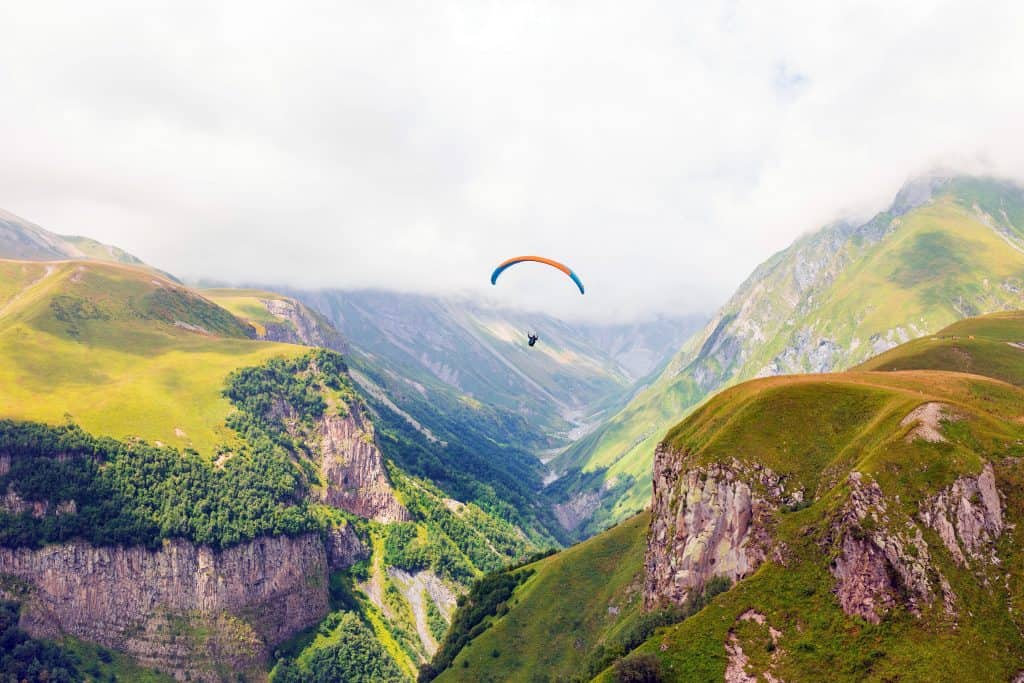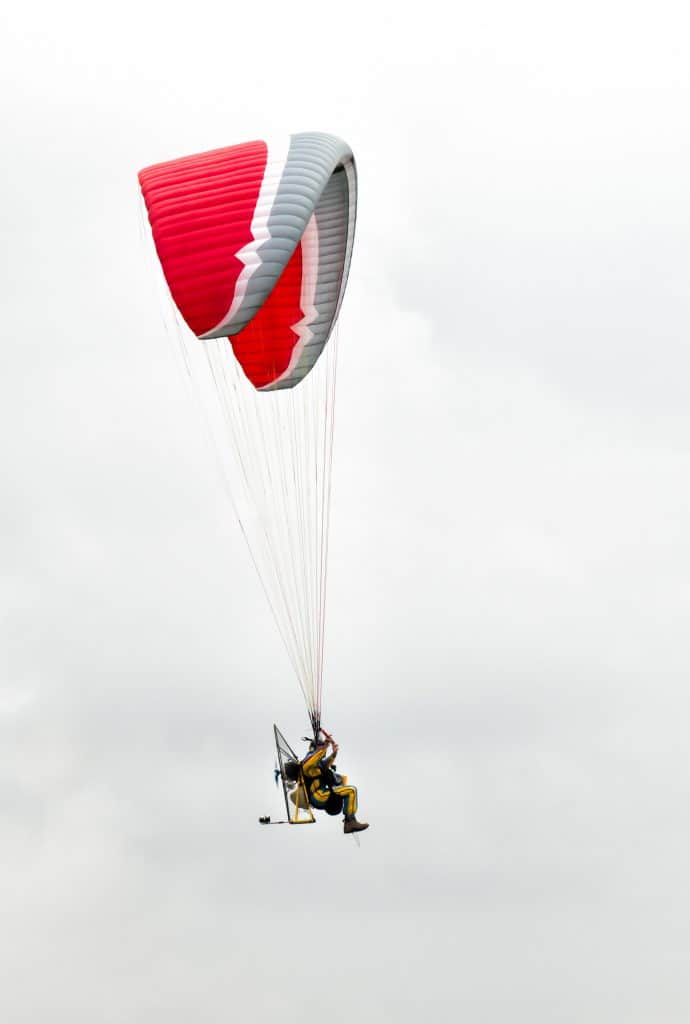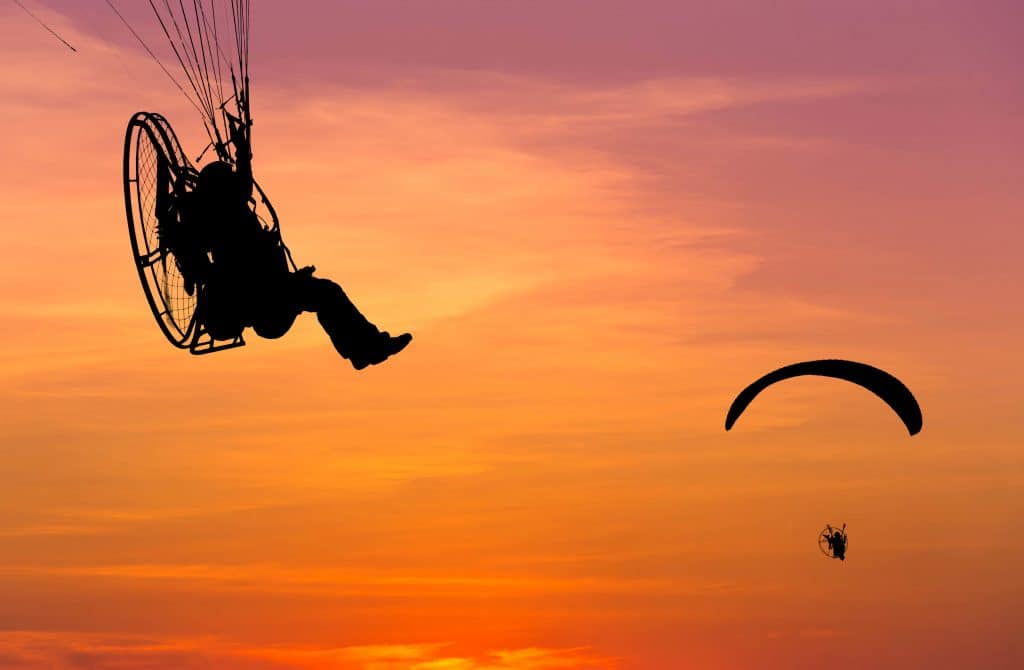
Flying a paramotor is one of the most exhilarating ways to get around. Seeing the ground beneath and the sky above is something that will just take your breath away. But you may be wondering if you can fly cross country in a paramotor. Can this piece of fabric get you somewhere far away, as everyone dreams of experiencing?
Can you fly a paramotor to another state? You can fly a paramotor to another state, or even across multiple state lines. It is both possible and legal. Numerous factors can affect a cross country paramotor trip, including your speed, chosen route, equipment range, and target destination.
In the end, traveling long distances over several states is an awesome experience. There is even an extreme, 1,000-mile paramotor race called the Icarus. For those that are very dedicated to flying their paramotor cross country, this race is a rush.
The winner of the Icarus trophy is someone who has bested a course of 1,000 miles in a paramotor, with vague instructions guiding him.
If this sounds like you, then you might just have a blast executing your flight to another state. But keep in mind, you wouldn’t fly a paramotor to another state because it is the fastest or most glamorous way to get there.
This is definitely not the case.
You are probably here because you are a real nut like me, and you want to try and fly a long distance. If you are interested in what flying cross country looks like, I will walk you through it here.
Below are the main factors to consider when it comes to flying cross country. Your speed, fuel range, and flyable hours will play a significant role in how far you can get in a day.
Know Your Route
So here you are. You are thinking about flying a long distance. Maybe to another state. You need to understand that this is not the same thing as those shorter leisure flights you enjoy above your hometown.
You need to know your route like the back of your hand. Take the time to learn about the places and landmarks along the way. Make plans for possible refueling and eating spots. Since the weather is such a determining factor in how far you can get on a tank of gas, plan to have some flexibility on where you will refuel.
Also, prepare for the worst. Plan your route along a path that is at least somewhat close to civilization. Never cross bodies of water. Do this, and when you have an emergency (as everyone will), you are better able to get the help you need, such as a place to stay and food in your belly.
Prepare for the worst.
If you plan your route along a path that is in the middle of nowhere, in the name of saving time, then you’re not taking a shortcut, you’re taking a risk. If the weather forces you to get grounded, then you can be forced down in someplace with no shelter and no food for you.
So, plan your journey along a route that is at least partially inhabited.
Speed
Your actual ground speed while flying a paramotor depends on a lot of factors, such as wind, how hard you are running your motor, etc., It is pretty hard to calculate your ground speed if you don’t have a GPS (which you should have if you are flying cross country).
But generally, with all the other variables set to neutral, and depending on the type of wings you have, paramotors have a top speed of about 40 mph, which is roughly half the speed that standard cars achieve on the interstate.
If you are driving 80 miles per hour in a car, a journey of 15 hours will take you roughly 1,200 miles. No matter where you are starting that is definitely far enough to get you into a state or two over.
Generally, paramotors have a top speed of about 40 mph.
If you are paragliding, you might be able to average 35 mph, which would not get you quite as far in a day.
But if you are considering a cross country paramotor flight, the chances are that speed isn’t your motivation. There are those of us who would like just to relax and see the country.
Maybe it’s your dream just to take it slow and take in the clouds, farms, cities, and lakes. Even though you have to stop every few hours for gas, you might like stopping and getting to know the people wherever you land. You might love taking the time to hone your flying skills, take some fantastic images, or make some great videos for YouTube.
Whatever your reason, know that there are others like you. But just know that people don’t do it for the speed of getting to where they are going. They do it for the sights, the smells, and the experience.
Range
The next big thing to take into consideration if you are thinking about taking an air trip to another state is the range of your paramotor. Under perfect conditions, a paramotor can run for up to 7 hours. However, there never are perfect conditions, at least not for 7 hours straight.
So usually, paramotors can run for about 5 or 6 hours without needing to refuel. If the wind is in your favor, it could be more. But, if the wind is coming at you, you will burn up all of your fuel fast. You will only get a few hours out of your gas tank.
Except for the worst of conditions, you can get a pretty decent range on your paramotor. So if your grandma lives out in Nebraska, and you decide it’s time to visit again, you might be able to make the 150-mile hop without having to refuel.
But that completely depends on the wind and your abilities.

One thing you will learn as you become more skilled at paramotoring is that there are little tricks you can do to increase your range. Think about it this way: have you ever seen paragliders? They are the people who use paraglider wings, as we do, but without a motor.
They are entirely at the mercy of the wind, but sometimes, they can stay in the sky for hours. If you ever visit Salt Lake City on a clear day, you will see paragliders taking advantage of the drafts coming off of the mountains and the lake.
By taking advantage of the natural wind, paragliders can even climb higher without a motor attached to them!
One thing that paramotorists do to save on fuel and increase their range is to learn how to imitate the paragliders. You can learn how to feel the breeze, and use it to get maximum lift underneath you.
You can learn how to read the clouds, to see which way they are moving, and to take advantage of the wind they are bringing. The best way to increase your range/ gas mileage as a paramotor pilot is to take maximum advantage of the wind nature is sending you.
Be an active participant in the way your craft is being flown.
Don’t just set your engine throttle and forget it. Be an active participant in the way you fly your craft. See how little RPMs you can get away with and still be moving quickly along. Get in there and take charge. You are the pilot, after all.
But after all the tricks up your sleeve, there’s only so much you can do. You will eventually have to come down and refill your tank. This dictates that cross country pilots must follow civilization to a certain extent.
Even if it would be fewer miles for you to fly in a straight line to your grandma in Lincoln, you might need to follow a string of small towns in a different direction than you would by flying in a straight line.
Daylight
Daylight is the great limiter of paramotoring. Plain and simple, you can’t fly when it is dark. It is illegal, and it is dangerous. In the winter, this means you’ll have fewer flight hours than in the summer. You’ll also have less daylight to burn, the further north you are.
Which means that if you are serious about getting somewhere in a paramotor, and don’t mind sitting strapped to a parachute all day, you’ll be able to fly for 12-16 hours per day, depending on your location and the time of year.
If you make your refueling stops as short as possible, this could give you a range of almost 500 miles, if the weather is on your side.
Weather
Paramotoring is a sport that plain and simple cannot be done when there is bad weather. Anything more than a stiff breeze is a danger to you when flying. Several hundred miles in a day is only possible if the weather is on your side for the entire flight.
If it is not, you’ll be on the ground for as long as nature dictates. You are always at the mercy of the wind and weather. If you’re lucky enough you might find yourself on the ground in some small town where you don’t know anyone, and you can spend all afternoon making new friends.
But if you get grounded in the middle of nowhere, you will be making friends with no one. You will be eating dinner with no one. And depending on if you planned well, you might not be eating dinner at all. All joking aside, the weather is something for which you need to prepare.
So, plan your route with the worst in mind. You need to have backup plans with backup plans. Where will you stay if you can’t make it in a day?
Identify suitable places on the map before you go. What will you eat if you have to stay on the ground outside of a town? You should bring something to eat with you. Be prepared, and you won’t be scared.
Plan your route with the worst in mind.
Always check the weather before you leave, and not just from your starting point. Check the weather along your whole route. Also, if you have a smartphone, you can track the movement of storms that you didn’t see coming once you are up in the air. Using the radar on your favorite weather app, you can see bad weather and plan on the fly if you have to.
You can choose to either re-route and go around the bad weather, or decide on a good place to stop. This is why you make plans; you can make informed decisions if you have to make them in the moment. Knowledge really is power in situations like these.
In general, it is better to stop and take a break before the weather forces you to come down. If you wait until the last possible minute before things get dicey to come down from the air, then you are severely limiting your choice of landing sites.
If you wait, then chances are you won’t have any choice or any conveniences where you do land. Again, this is why you planned, so you can put yourself in a great position when forced to come down.

Have A Buddy
You know the rule. Never go alone. Going somewhere alone is about the worst thing you can decide to do. No matter how smart you are, how skilled you are, or how clear the weather appears to be, going alone is never a good idea.
Almost everyone who dies while backpacking or hunting or traveling or who is attacked by a mountain lion has one thing in common: they went alone.
Trust me; you are going to feel alone enough in the air all by yourself for all those hours. Having a buddy or two go with you is non-negotiable in my book.
Tell Someone Where You Are Going
Similar to the reasons why you should always fly long distances with a buddy, there are many reasons why you should tell someone where you are going. Tell them about the route you have planned out.
Let people know when you get to your destination. Give them updates along the way. Then people will be able to get help for you if you don’t make it to where you were going and have to land somewhere without cell service.
Conclusion
So there you have it. If you are thinking about flying some distance on a paramotor, then you should know that I think it is something worth doing.
Related Questions
What is the best way to know the places you should avoid, like airports, etc.? The best way to know about airports and other obstacles is to plan your route first using some good aviation maps. Another helpful thing to have in-flight would be a paramotoring app, which can alert you when you are getting close to an off-limits area.
What if I run out of gas in flight? When flying a paramotor, if you ever run out of gas in flight, just glide to a safe landing place immediately. As already mentioned, paragliders do something similar to what we do but without a power source. Using your wing, you can make a safe landing. Try to avoid doing this, though.
